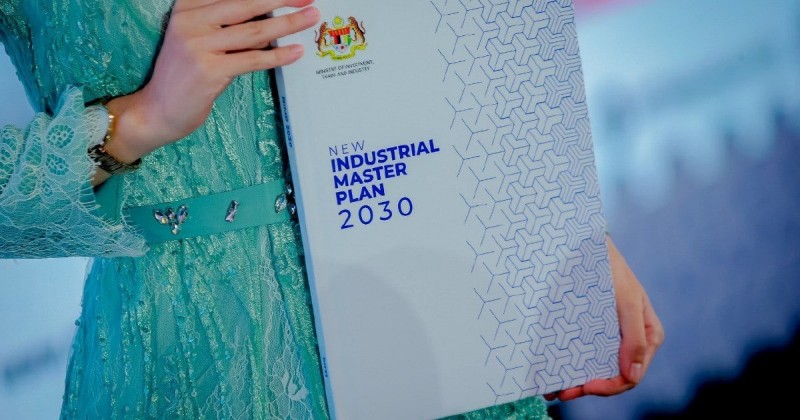
Image credit: NST
The newly-launched National Industrial Master Plan (NIMP) can catapult Malaysia out of the middle-income trap as it offers Malaysia opportunities.
Still, it needs to navigate a steep contour that requires policymakers in Malaysia to take cognizance of the global competition for foreign direct investment (FDI) from neighbouring countries and economic uncertainties that can impact the flow of FDI into the country.
The launch of NIMP comes when the global situation has driven companies to turn Southeast Asia into a "Plus One" destination to ensure economic security and supply chain resilience.
This unlocks opportunities for Malaysia to further integrate into the global value chain.
Unlike the previous industrial transformations and three industrial master plans since 1986, the NIMP 2030 adopts a "mission-based approach".
It is a horizontal policy with well-defined missions that will galvanise not only the entire manufacturing ecosystem but also the whole of the nation to drive industrial transformation and realise our vision.
Mission one is to advance economic complexity, where industries will be encouraged to innovate and produce more sophisticated products, mission two is to tech up for a digitally vibrant nation by embracing technology and digital transformation, we can drive innovation, enhance productivity, and create new opportunities for economic growth.
The other mission is to push for net zero which emphasises our commitment to addressing climate change by striving for a net zero future and lastly, it is to safeguard economic security and inclusivity.
Malaysia must recognise that if FDI must be spurred into the country to achieve the above, it needs to compete with countries such as Singapore, Thailand, and Vietnam, for FDI.
These countries offer attractive incentives, infrastructure, and a skilled workforce, making it challenging for Malaysia to stand out.
Another challenge for Malaysia is that bureaucracy and red tape have been a strong deterrent to attracting foreign investors and it is paramount that simplifying the procedures is crucial to ensure the inflow of investments.
The availability of skilled labour and workforce productivity are essential factors for FDI.
Malaysia must continue to invest in education and training to meet the demands of industries seeking highly skilled workers.
Towards this, Malaysia can look towards countries such as Japan and South Korea, which have risen from the debris of the Second World War to being industrial powerhouses and emulate their best practices to foster a culture of innovation through technological hubs.
This can attract global technological companies to Malaysia.
To further attract FDI into Malaysia, it needs to bring more expatriate staff from their home so that necessary expertise can be imparted to help Malaysia move up the value chain faster.
Despite all these efforts Malaysia does not have a critical mass of talented workforce and as such investors might find neighbouring countries more attractive, therefore it must liberalise the infusion of technical staff from overseas to help catapult Malaysia's workforce to a higher level.
The government must initiate skill development as the Penang Skill Development Board has been able to produce industry-driven personnel, particularly for the E&E sector and the rubber glove industry has its training center, producing a world-class workforce.
There are many models of technical research that Malaysia can follow, and Malaysia must step up its investment in research.
Towards this, it is paramount that our investments in research and development be increased many-fold and a culture of research and development be created developed and encouraged.
Towards moving up the economic trajectory, we must emulate the Fraunhofer-Gesellschaft, which is the leading organisation for applied research in Europe.
The institute aims to ensure that the research it carries out is applied research whose outcome is useful to society. Malaysia is already an educational hub and the various multinationals can collaborate with universities to provide quality products and create industry-driven people.
A notable initiative towards achieving the above objective is for Malaysia to have more institutions of higher learning from South Korea and Germany, that would facilitate the production of graduates that would fulfill market needs as both these countries are known for technological and engineering prowess.
Malaysia must also build a cadre of technological and industrial workers through an overhaul of the education system where it would be common for people to use buzzwords such as IoT, drones, and robotics.
Policies and master plans are only as good as they are implemented, and the government must be firm in the execution of its policies to infuse foreign talent.
Source: https://www.nst.com.my/business/insight/2023/10/965285/success-nimp-would-depend-quality-foreign-talent-infusion

